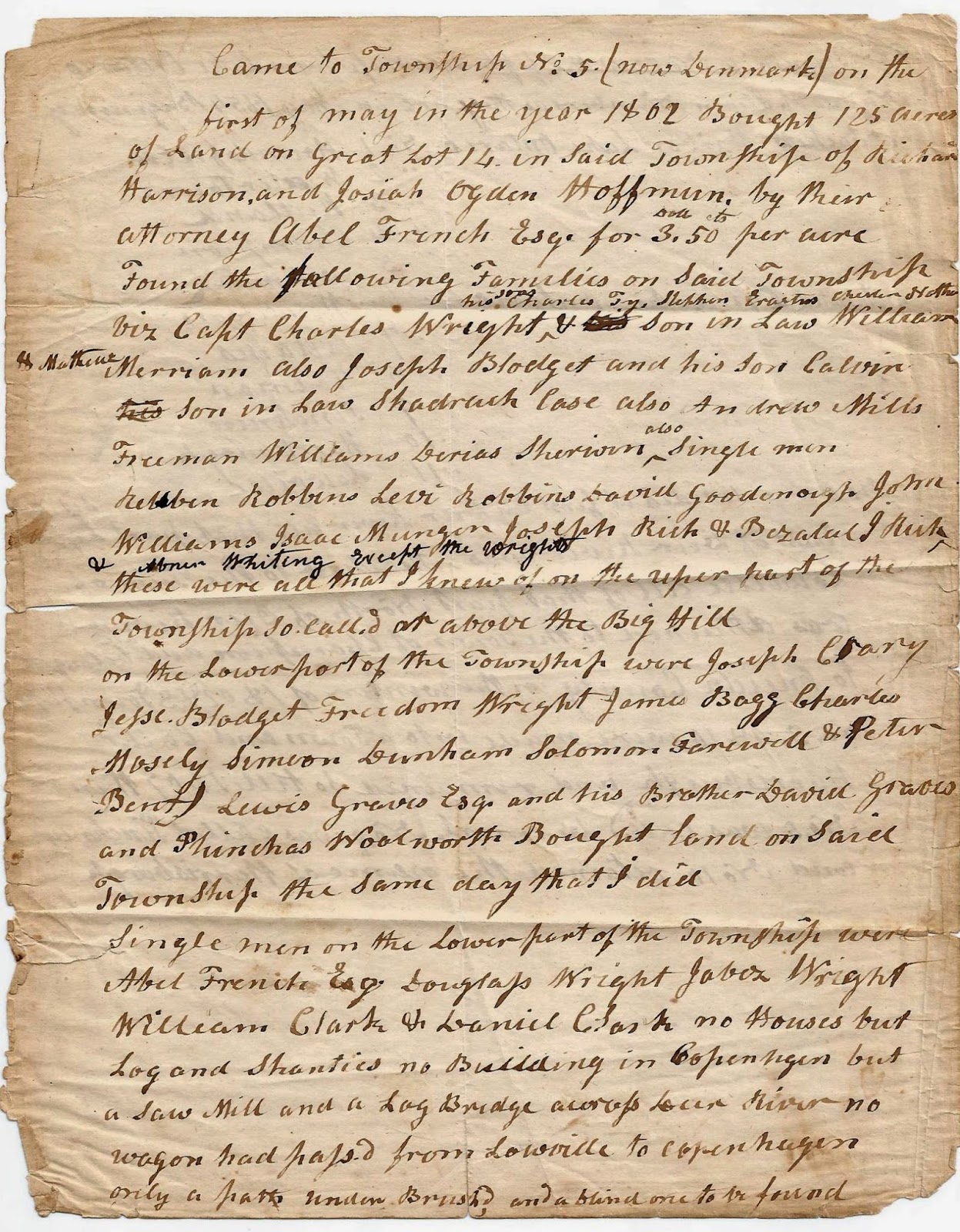 |
| William Cook |
I have written before that William Cook, my great great
grandfather who homesteaded in Saskatchewan, came to Canada from England with
his brother Elijah. I noted that I had found the brothers and their families in
Halton, Ontario in the late 1880’s and early 1890’s. I also reported that I
could find no trace of Elijah, his wife Charlotte (nee Bemrose) and their son
William after that. Well, things have changed.
Due to a process of one piece of information leading to
another, I have made some significant discoveries about William’s siblings. I
had started looking into William and his family again due to the popularity of my blogposts about him, and because I wanted to provide more to my readers
who want to know about the Cooks. (The responses I get from readers influence
what I write about to a great extent). I discovered that another brother,
Alfred Cook, also came to Canada with William and Elijah. (All of their father’s
sons were therefore immigrants to North America). I was able to find Alfred
living in Peoria, Illinois, starting in about 1896, and this led to my finding
Elijah living there as well, and to discovering that Elijah also had a
daughter.
Elijah Cook was born in 1858, the sixth of nine children, in
Timberland, Lincolnshire, England, to William Cook Senior his wife Ann Squires.
He married Charlotte Hannah Bemrose in Clee, Lincolnshire in 1883. Their son,
William Alfred Cook, was born on March 27, 1885 in Lincoln, Lincolnshire.
Elijah and his brothers William and Alfred came to Ontario, Canada in about
1888, very likely together. In the case of William and Elijah, their wives and
children came separately at later dates. Elijah and Charlotte had a second
child, Mary Ellen Priscilla Cook, on June 24, 1891 in Halton, Ontario. This
birth is last record I have of Charlotte, and due to the records I have for the
rest of the family, I suspect that she died in less than a decade after, and
possibly in childbirth. The 1891 Canadian census shows Elijah living in Halton
and working in a “brick yard”. He appears next in Peoria, Illinois, in the city
directory, in 1895, as a “brick burner” for the “Peoria Brick” Company. Elijah
and his brother Alfred then both appear in the 1896 Peoria City Directory, both
working for the Peoria Brick Company, Elijah as a “foreman”, and Alfred as a
“machine man”. It appears then, that Elijah may have come to Peoria first, to
be followed by Alfred within the year.
Elijah appears in the Peoria city directory for the last
time in 1900, and does not appear in the U.S. census for that year. His
nine-year-old daughter Mary Ellen is found boarding with a family without her
parents in Peoria in 1900. (There is a William Cook also boarding there, but he
seems to be too old to be her brother William, but could be him with an
incorrect age and place of birth). Because of this, and because the 1900 Peoria
city directory is the last trace I have of Elijah, I believe he may have died
in early 1900. His son William appears in the Peoria city directory from 1902
to 1906. In 1902 and 1903 he is working at the Kingman Plough Company, where
his uncle Alfred is also working. Suddenly we next find William getting married
in Monterey, California on May 27, 1906 to Angela Maria Serrano. They appear to
have had only one son, William P. Cook, born August 23, 1909. William Alfred
continued to live in the Monterey area for the rest of his life, mostly as a
farmer, until his death on March 29, 1974 in San Francisco. As for his sister,
Mary Ellen Priscilla, the next and only other record I have for her shows her
marrying Ralph Alvan Wheeler in Monterey on May 18, 1918. He dies November 4th of the same
year.
William and Elijah’s brother Alfred was born about 1860 in
Timberland, Lincolnshire. He was baptized August 5, 1860 at St. Andrew’s
Church. He married Margaret Lancelotte in 1885 in Salford, Lancashire. Their
first child, Frances Ancel Cook, was born in Pendlebury, Lancashire on August
31, 1885. Their son, and the only other child of theirs we know of to be born
in England, William Jack, was born in Timberland on February 9, 1887. Their
children born in Canada were Martha E. (born September 20, 1888) and Florence
Mary, born about 1892. George Alfred Cook was born March 13, 1894 in Kirkville,
New York, and Margaret was born in May 1896 in Peoria. Aflred and Margaret therefore
had children born in three different countries. Alfred worked in a variety of
occupations during his life, but in North America he primarily was a labourer
in brick yards early on, and then a labourer for the Kingman Plough Company in
Peoria for most of the rest of his life. It appears that Alfred was the only
one of the brothers to return to England to visit, and it appears that he did
this twice. His daughter Martha, although born in Canada in 1888, was baptized
in Timberland at the age of five on August 20, 1894. This was two years before
his father’s death. Alfred and Margaret also travelled to England on in 1909,
as there is a record of them returning home to the United States on the
Maurtenia on August 20, 1909. He lists his occupation as “blacksmith”, likely
due to his having been an ironworks worker in 1881 in Gainsborough,
Lincolnshire with his brother Elijah. Alfred died on July 29, 1926 in Peoria,
where he had always lived after 1895. His wife Margaret died on March 22, 1935,
also in Peoria.
Their son, George Alfred Cook, had a son William Alfred
Cook, who became a multi-billionaire, and one of the richest men in America. I
hope to write about them next.




